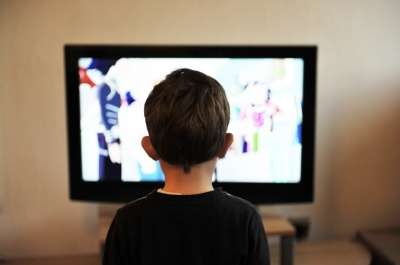Majority of TV food ads are unhealthy and target children, study finds

The majority of foods advertised on New Zealand television are unhealthy, and most of those unhealthy food advertisements are specifically targeted at children, new research has found.
The research, published in the international journal Public Health Nutrition, is the largest study of food advertising on television conducted in New Zealand. It covered eight days and three channels and analysed over 10,000 advertisements, about 1800 of which were for food.
Dr Stefanie Vandevijvere from the University of Auckland, who led the study, said "Over two thirds of the food ads contained foods that according to WHO standards should not be marketed to children, yet nearly 90 per cent of them were shown during children's peak viewing times." For example, she said that between 6 and 7 pm, which is when more than 120,000 5-13 year-olds are watching TV, over 15 unhealthy food advertisements appeared per hour.
"This creates about 2 million so-called 'impacts per hour', which is the number of unhealthy food ads times the number of children watching. This is a very large blast of unhealthy foods to children being marketed to them every night of the week."
One-third of unhealthy food advertisements included a promotional character and one-third contained a premium offer, like a giveaway, which is very enticing for children. The most common promotional tactic used was the 'for kids' strategy with 4 out of 10 ads with promotional characters either featuring children in the advertisement or directly targeting children in the messaging or product packaging. One in five ads with promotional characters used non-sports celebrities and 17 per cent used cartoon characters.
Dr Vandevijvere says the study exposed several major weaknesses in New Zealand's current self-regulatory system, such as the lack of provisions to reduce the total volume of unhealthy food advertising seen by children, and the definition of 'children's viewing times', which includes only children's programming times in the morning and afternoon, but not children's peak viewing times in the evening. It is uncertain to what extent the new Children and Young People's Advertising Code, going into effect beginning of July 2017, will address some of these concerns. The new Code specifies an ad to be 'deemed to be targeting children or young people if they are likely to comprise 25% or more of the total viewing audience'.
Dr Vandevijvere says that it is not logical to include adults in the denominator when the purpose of the Code is about reducing unhealthy food advertising targeted to children. "The evening from 5pm to 9pm is the peak viewing time for children and the fact that it is also peak viewing for adults does not protect children from the effects of that marketing," she says.
"The findings of this study suggest that children are exposed to a food marketing environment on television that is largely unhealthy and persuasive," Dr Vandevijvere says.
"A recent study found that children who watched just 20 television adverts a week for sugary breakfast cereals eat about 30 percent more of them than children who see none."
Dr Vandevijvere says health groups across the country have called for tighter restrictions on unhealthy food marketing which targets children, including using the WHO classification system which was specifically designed for this purpose rather than relying on the Ministry of Health Food and Beverage Classification system which was not designed for marketing restrictions.
"In addition, to define whether large numbers of children are watching, either a watershed time of 9pm should be used or the threshold numbers of children viewing should be tightened. The current definitions of what constitutes children as the audience are far too vague and permissive."
After 3 July, the marketing and advertising of unhealthy food products to children and young people is supposed to cease according to the industry's self-regulatory code. Any suspected breaches of the code can be readily reported to the Advertising Standards Authority.
More information: Stefanie Vandevijvere et al. Unhealthy food advertising directed to children on New Zealand television: extent, nature, impact and policy implications, Public Health Nutrition (2017). DOI: 10.1017/S1368980017000775















